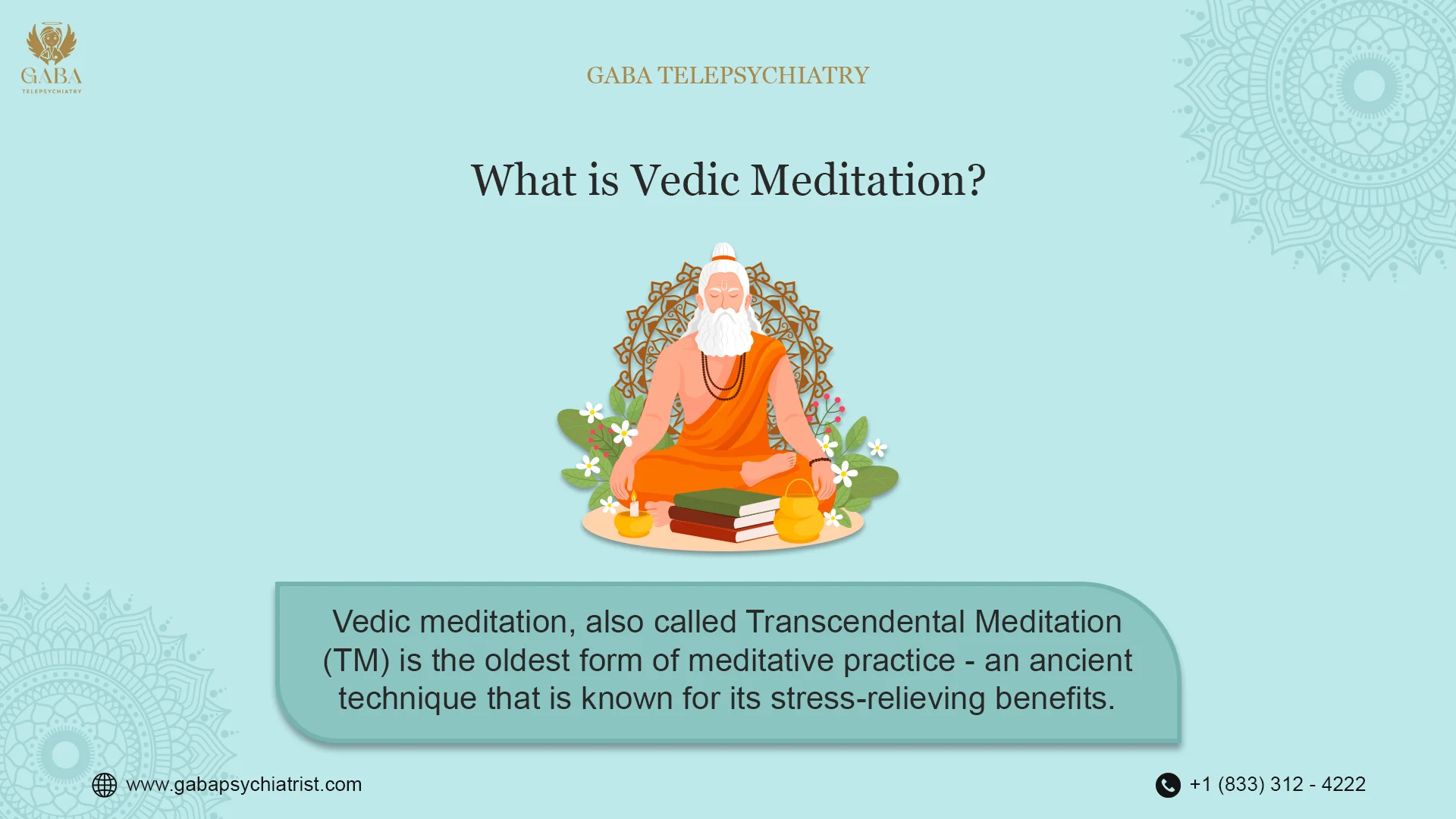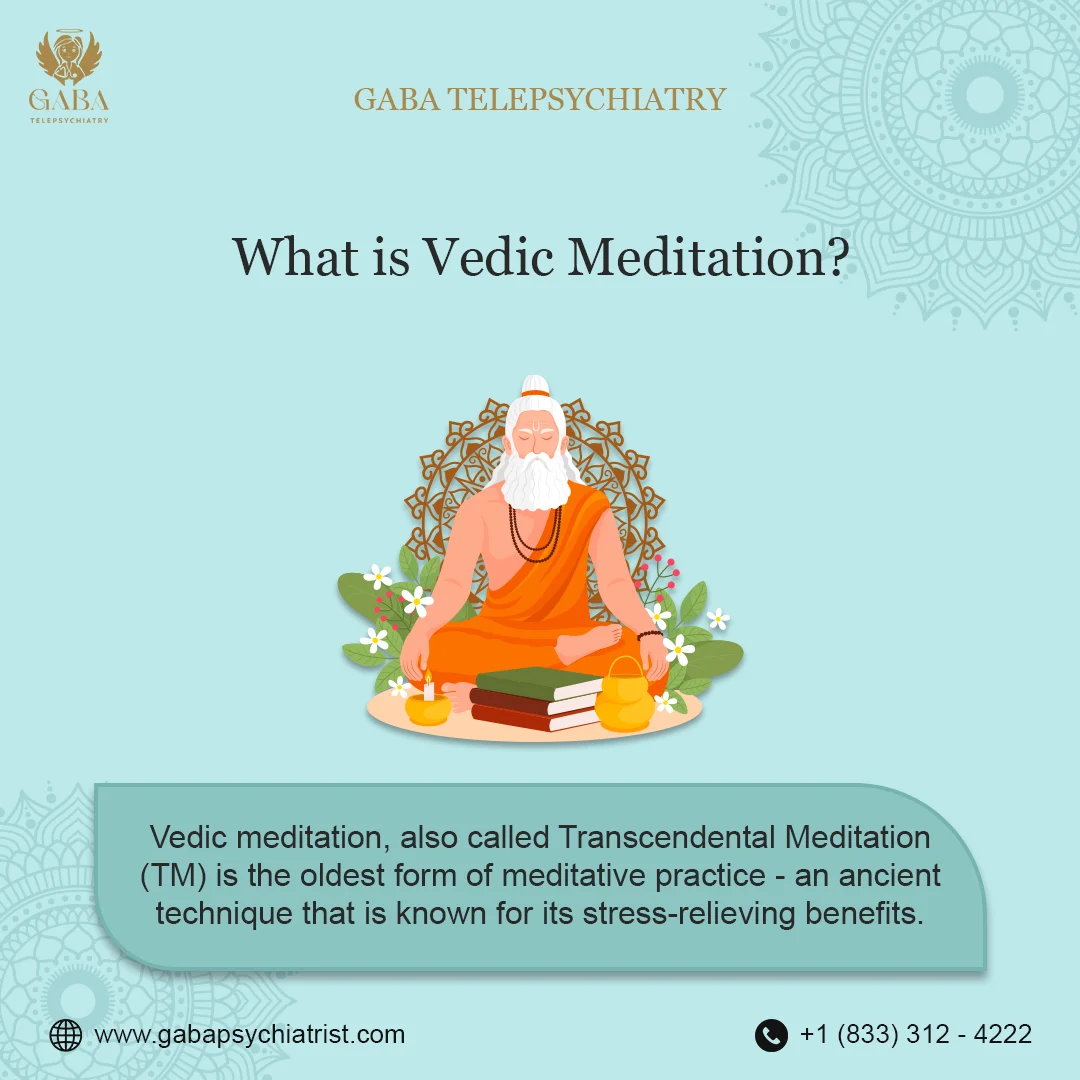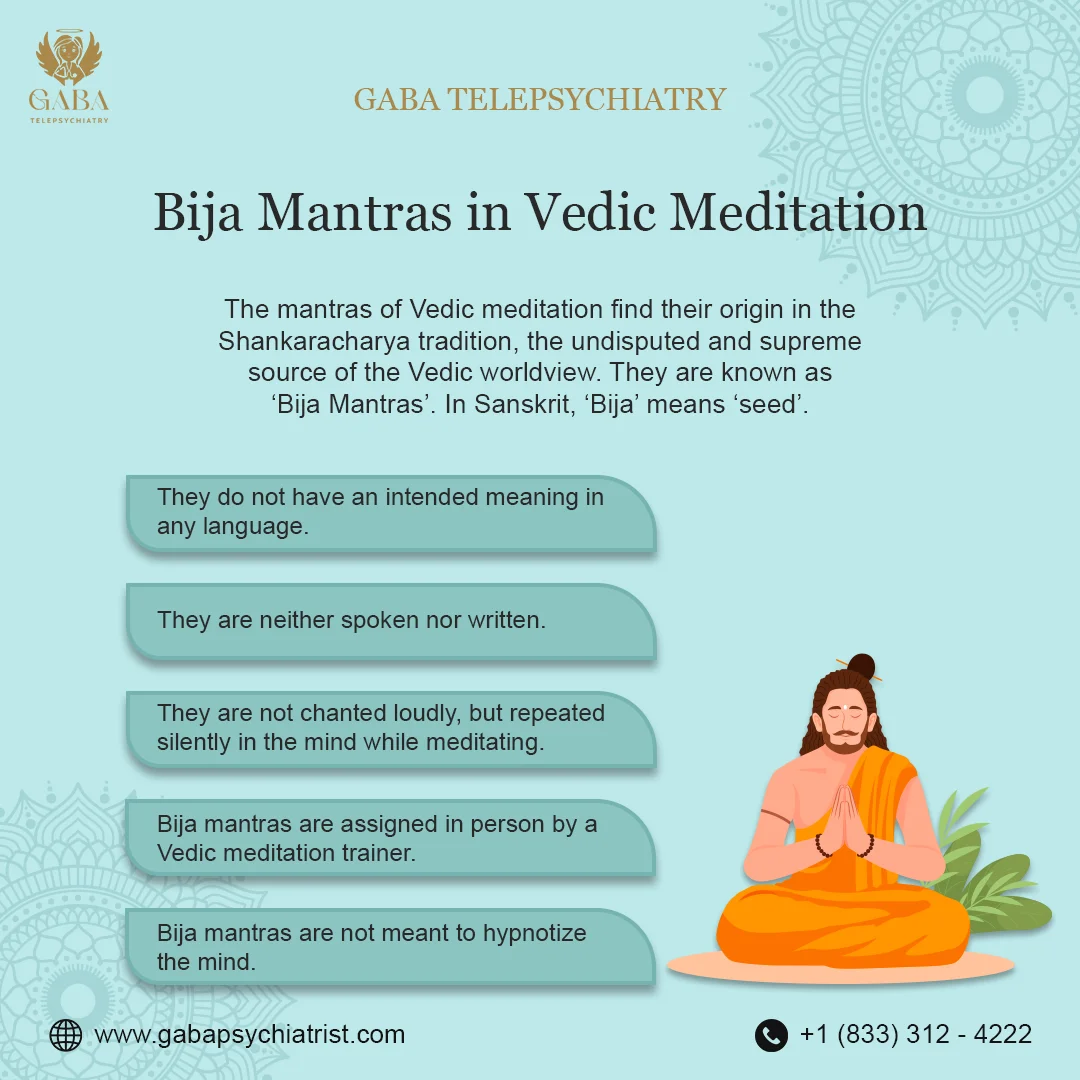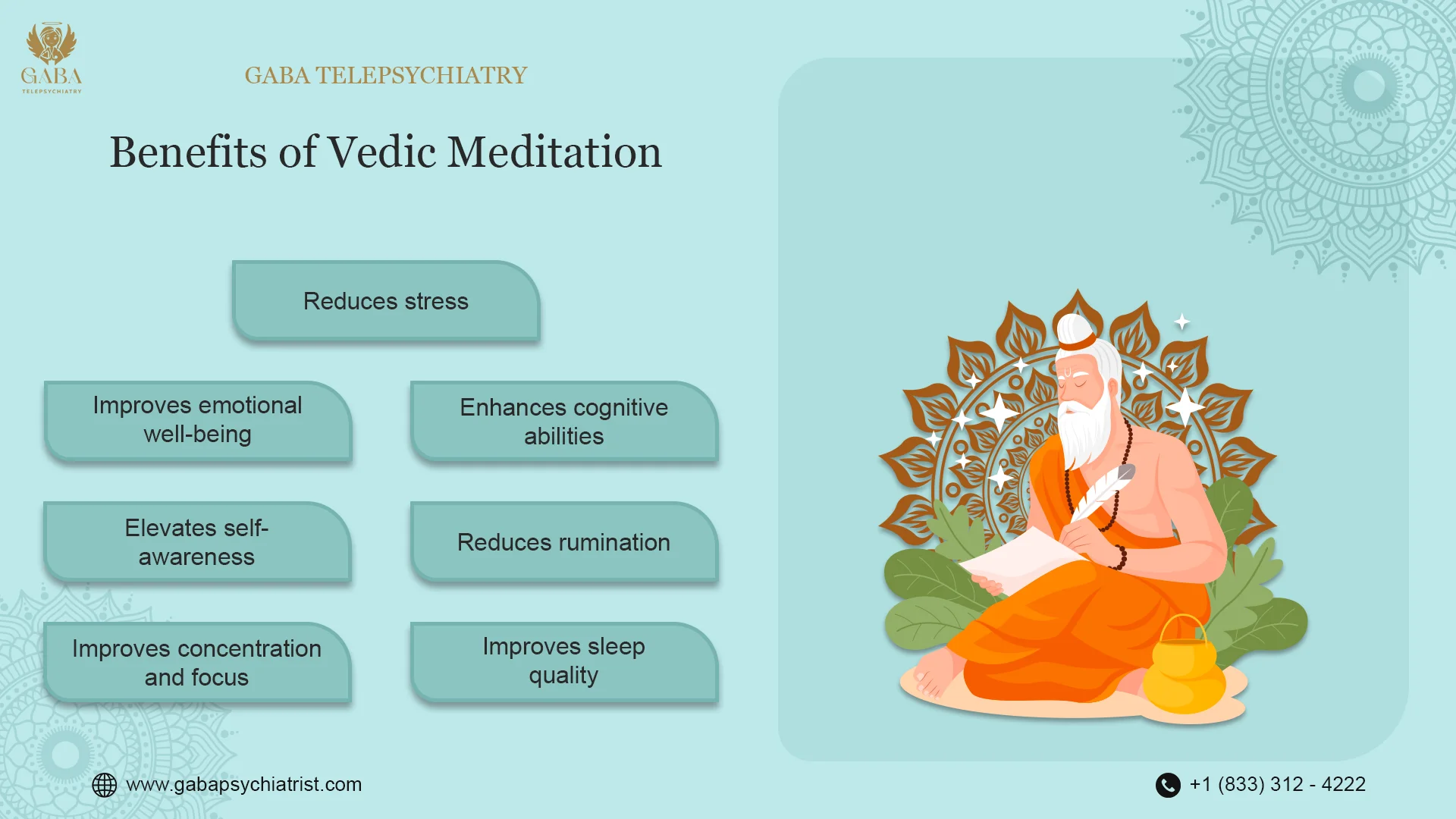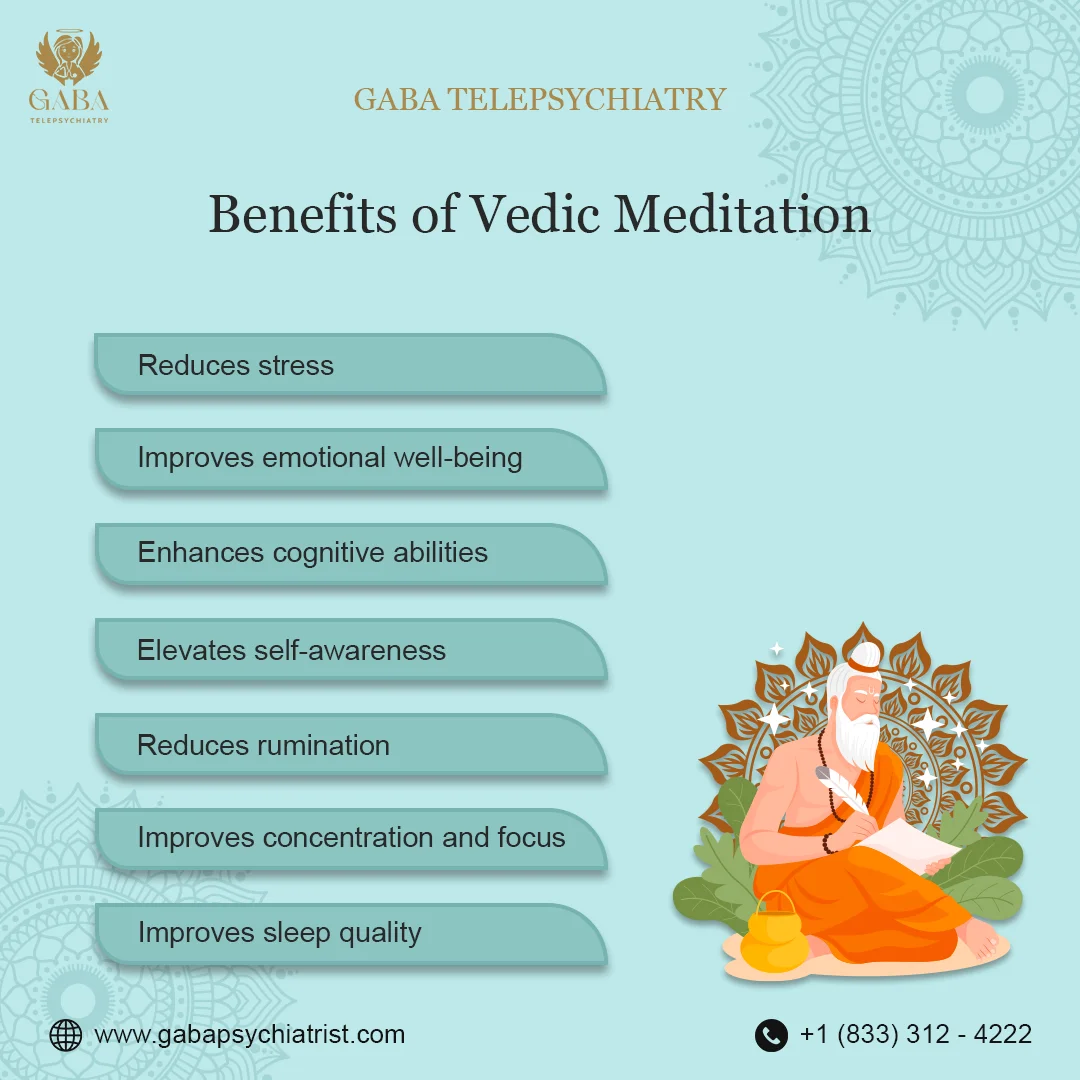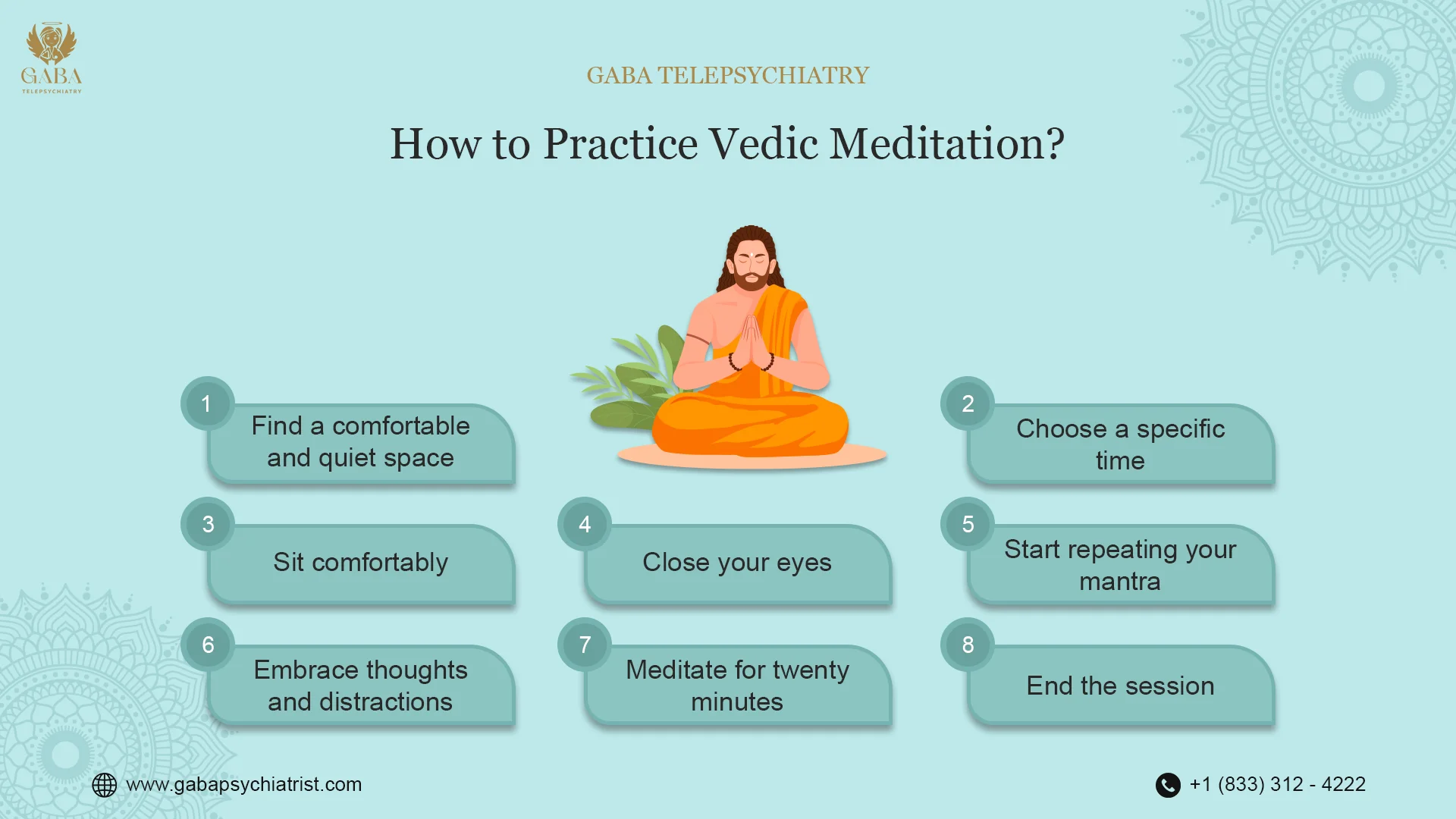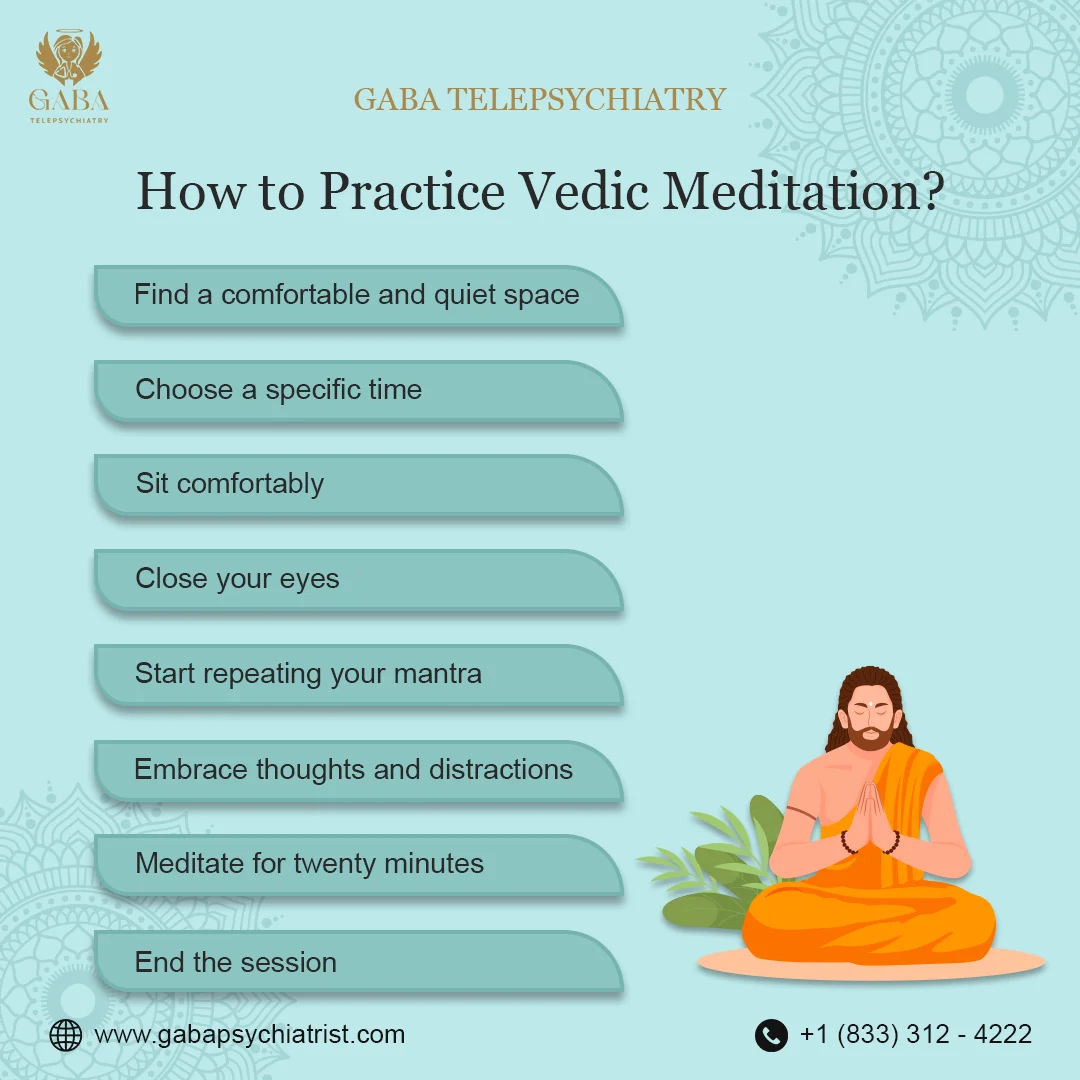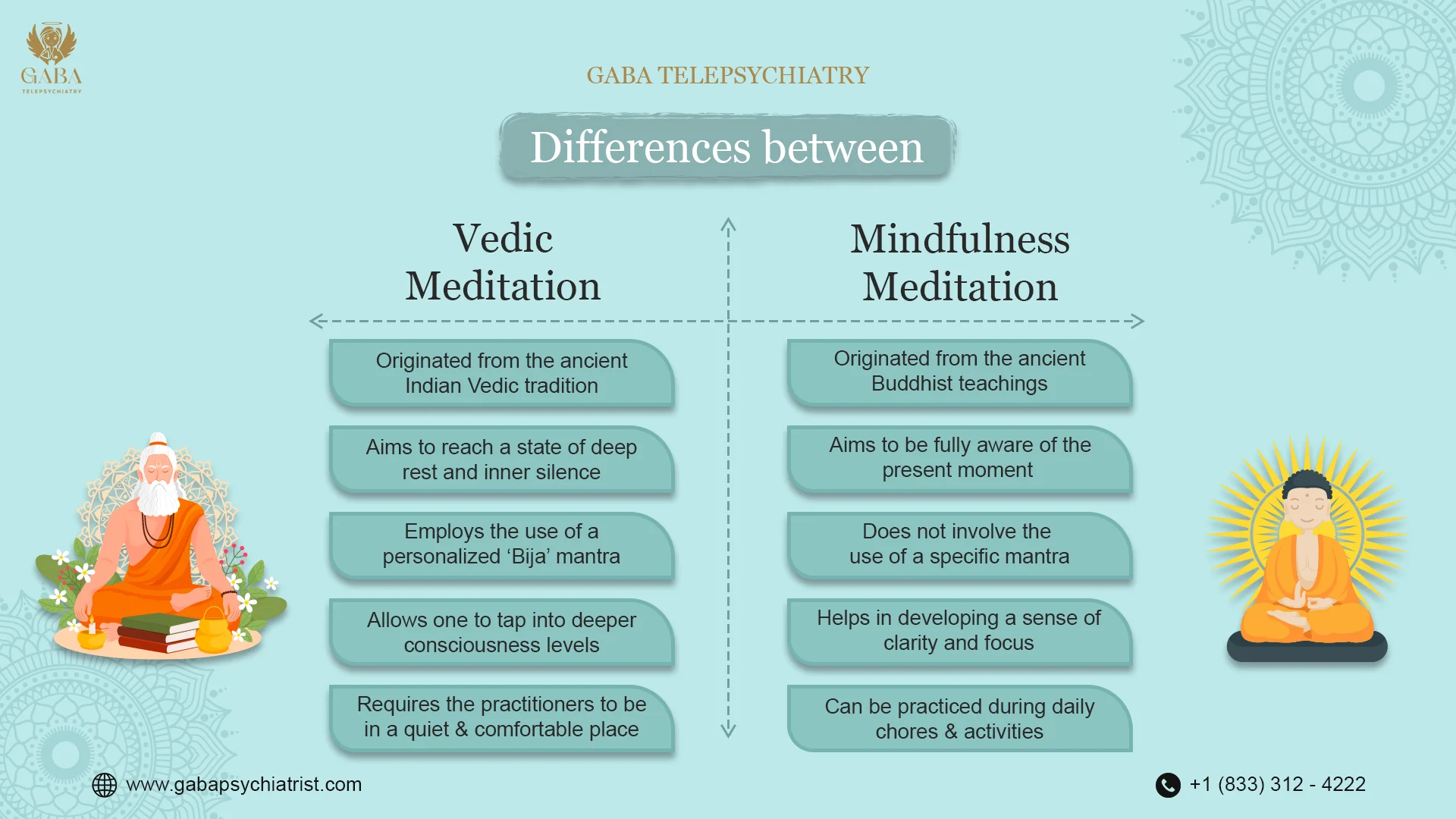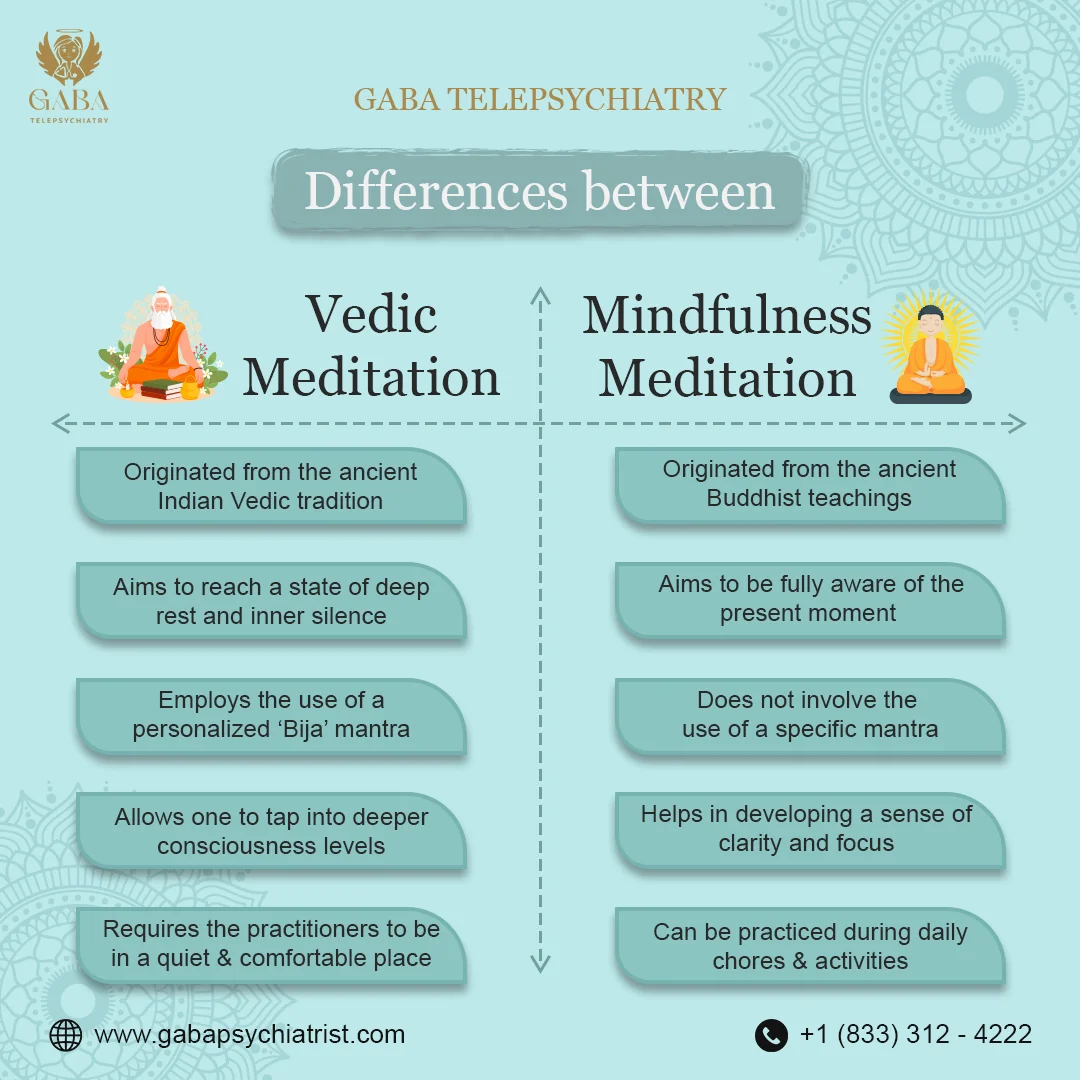Neuroscientists claim that our brains process approximately 60,000 to 100,000 instances of cognitive activity in a single day. Each of these mental processes involves energy, intelligence, and utilization of our emotional and cognitive resources. Excessive cognitive activity causes an accumulative increase in stress levels causing a domino effect, until the stress level escalates to a mini explosion. The purpose of Vedic meditation is to quieten the mind and allow the dominos to realign or reset.
Vedic meditation, also called Transcendental Meditation (TM) is the oldest form of meditative practice – an ancient technique that is known for its stress-relieving benefits. Just like Yoga and Ayurvedic medicine, Vedic meditation is explained in the Vedas, ancient scriptures originating from India that date back almost five thousand years.
The Vedas aim to lay out a comprehensive path to a happy and fulfilling life through the practice of experiential learning. Vedic meditation is an effective technique that takes you on a journey of self-discovery and helps you integrate your learnings into daily life.
What is Vedic Meditation?
Vedic meditation is based on the idea of using a ‘Mantra’, which means ‘mind vehicle’. It is a tool that takes your mind from one place to another – from the busy realms of your life to a quieter place that lies covered up behind all the hustle and bustle.
A mantra is a calming sound that is silently repeated in the mind while practicing this form of meditation. It is the key to putting the mind in a quiet state and allowing your body to feel calm and restful.
Some sounds can be deeply relaxing – for example, the sound of the river running or birds chirping. Merely thinking about these sounds creates a soothing experience. Similarly, this meditative technique centered around the power of sound will help you feel clearer, relaxed, and emotionally fulfilled.
Vedic Meditation Mantras
The mantras of Vedic meditation find their origin in the Shankaracharya tradition, the undisputed and supreme source of the Vedic worldview. They are known as ‘Bija Mantras’. In Sanskrit, ‘Bija’ means ‘seed’.
These mantras carry subtle sound vibrations that seed and initiate the process of relaxation by gauging the mind from a highly active state to a less stressed one.
Bija mantras have the following unique properties:
- They do not have an intended meaning in any language.
- They are neither spoken nor written.
- They are not chanted loudly, but repeated silently in the mind while meditating.
- Bija mantras are assigned in person by a Vedic meditation trainer.
- Bija mantras are not meant to hypnotize the mind.
Unlike mindfulness meditation which focuses on observing your breathing patterns and living in the moment, Vedic meditation emphasizes the importance of Bija mantras to navigate your mind to its silent layers.
How Does a Vedic Meditation Mantra Work?
The effectiveness of a Vedic meditation mantra lies in its vibrational sound quality and not its linguistic meaning. The repetition of the mantra in your mind dissociates you from other thoughts and associations. Gradually, its vibrations travel from the active layers to the mind to the quieter ones in an effortless manner.
The practice of Vedic meditation involves a personalized mantra. As you repeat the mantra, even alongside other thoughts, it becomes easier for you to get rid of those thoughts and develop an affinity towards the vibration of your mantra. The mind is naturally drawn towards the sound, drifting away from all chaotic thoughts.
Most importantly, the chanting of the mantra exudes no stress or effort – eventually, it becomes softer and fainter – and the mind gets more drawn to that subtle vibration. You start settling into the quieter state of your mind. At a certain stage during the meditative session, the Bija Mantra completely disappears from your awareness, and that is when you have found your stillness and quietitude, also called the transcendental state of being.
This is a blissful experience of ultimate satisfaction, where no sound or thought can interfere with your supreme inner silence. Whether you have a busy mind or you find it easy to focus, the Vedic meditation practice will make you experience your most restful realms.
Vedic Meditation, like other forms of meditation, has been known to provide potential benefits for individuals dealing with depression and anxiety. Psychiatrists at Gaba Telepsychiatry encourage the practice of Vedic meditation.
However, they state meditation is an art form, and may require years of practice for optimum effect. It is important to see a psychiatrist if symptoms are severe, or causing impairment in social and occupational functioning.
Benefits of Vedic Meditation
For thousands of years, meditation practitioners have leveraged the advantages of Vedic meditation. With time, this technique also gave rise to many other forms of meditation techniques, which are used widely in today’s times.
Regular practice of this technique has shown positive effects on mental and physical health in various studies. Leverage these benefits by integrating Vedic meditation into your daily routine:
- Reduces Stress: Meditation activates the relaxation response, reducing the production of stress hormones such as cortisol. This can help manage anxiety and alleviate symptoms of depression.
- Improves emotional well-being: Regular meditation practice may enhance emotional stability, increase positive emotions, and decrease negative feelings associated with depression.
- Enhances cognitive abilities: Vedic meditation has been linked to improved cognitive functions, such as increased focus, clarity, and memory. This may contribute to better overall mental well-being.
- Elevates self-awareness: Meditation promotes self-reflection and introspection, enabling individuals to recognize and understand their emotions, thoughts, and patterns. This self-awareness can also help address the underlying causes of depression and anxiety.
- Reduces rumination: Meditation can help individuals break free from repetitive and negative thought patterns commonly experienced with depression and anxiety.
- Improves concentration and focus: Regular practice of Vedic meditation can improve your levels of concentration and focus. It enhances the brain’s ability to stay present and attentive, making it easier to accomplish tasks efficiently and effectively.
- Boosts creativity and problem-solving abilities: By quieting the mind and allowing for a deeper state of relaxation, Vedic meditation can help enhance creativity and problem-solving abilities. It allows the mind to expand and think outside the box, leading to innovative ideas and solutions.
- Improves sleep quality: The practice of Vedic meditation can be a valuable addition to your sleep hygiene practices and help reduce insomnia to promote deep and restful sleep. This can lead to increased energy levels and improved overall health.
- Increases self-awareness and intuition: Vedic meditation helps in developing a deeper connection with oneself. It enhances self-awareness and intuition, allowing individuals to make better decisions and trust their instincts.
- Strengthens the immune system: Vedic meditation activates the body’s relaxation response, which in turn strengthens the immune system. Regular practice can help boost immune function, making the body more resilient to illnesses.
- Slows down the aging process: Vedic meditation has been found to slow down the aging process at a cellular level. It helps in reducing oxidative stress and inflammation in the body, which are key factors in aging.
- Increases resilience to daily challenges: Regular practice of Vedic meditation helps individuals develop increased resilience and adaptability to daily challenges. It allows for a more calm and balanced response to stress and difficult situations, leading to improved overall mental and emotional strength.
While Vedic Meditation has shown potential as a complementary approach to mental health, it is not a replacement for an appropriate treatment plan tailored to individual needs.
How to Practice Vedic Meditation?
The best thing about Vedic meditation is that it easily fits into your routine. Unlike other forms of meditation that may require longer time commitments, this meditation demands just twenty minutes of your time, twice a day.
Practicing Vedic meditation is a simple process with massive benefits. Follow these steps:
- Find a comfortable and quiet space: Look for a space where you can meditate without interruptions or distractions.
- Choose a specific time: To effectively learn to meditate, decide on a consistent time for your practice. The tranquility of early morning or the calm of late evening often provides the perfect backdrop for meditation.
- Sit comfortably: A key step in the journey to learn to meditate is finding a comfortable chair or cushion for your practice. Ensure your spine maintains a natural alignment, straight but not strained, allowing your body to relax fully.
- Close your eyes: Close your eyes gently and allow yourself to relax.
- Select a mantra: Vedic meditation typically involves the use of a mantra, which is a specific sound or phrase that you repeat silently. For personalized Vedic Meditation instruction, a teacher or qualified instructor can provide you with a mantra that resonates with your practice.
- Start repeating the mantra: Begin your Vedic Meditation instruction by softly repeating the mantra in your mind. The mantra should flow gently and effortlessly, emerging and fading naturally. It’s crucial not to exert force or try to control the mantra but to simply witness its rhythm.
- Embrace thoughts and distractions: During your Vedic Meditation instruction, it’s normal to encounter thoughts or distractions. When they surface, acknowledge them without attachment or judgment, and gently steer your focus back to the mantra.
- Meditate for twenty minutes: Engaging in Vedic meditation, a cornerstone of learning to meditate, typically involves twenty-minute sessions. This duration is widely regarded as ideal, though personal preferences and daily schedules can dictate slight adjustments.
- End the session: As you learn to meditate, it’s crucial to gently transition your awareness back to the present once your meditation time concludes. Take a brief pause to sit in silence, allowing yourself a smooth shift before engaging in your usual activities.
It is important to note that Vedic meditation can be best learned from a qualified teacher or instructor who can guide you through the process and provide personalized instruction.
How to get a Vedic Meditation Mantra?
While other forms of meditation may have specific mantras to chant, Vedic meditation mantras have not been written down or listed anywhere. The Bija mantras used in this form of meditation are personalized and passed on orally and in person from qualified instructors to meditation practitioners.
As a practitioner, you do not have to share your mantra, as it has been uniquely selected for you. The Bija mantra has supreme significance in this meditation technique because the success of your meditative sessions depends upon it. Different types of sounds might address particular aspects of your being, but it is that one right ‘seed’ that moves you towards a greater balance.
According to the Vedic history, your personal Bija mantra is the sound that was vibrating in the universe during your birth. Hence, it is highly specific for each person. Your mantra will resonate with your nature and harmonize with your way of life. The promised results of Vedic meditation will depend upon the selection of the most suitable mantra by your trained instructor.
Besides receiving the right mantra, it is equally important to learn how to use it during meditation to leverage its benefits and make your meditation successful.
Are Bija Mantras associated with Religion?
It is indeed surprising to know that these mantras are even older than the Sanskrit language and the origins of religion. They are primordial sounds that work on the level of vibration and not meaning, and therefore, they are far from being a ritual. They are simply devices meant to bring your mind and body to a restful state.
As per the Vedic worldview, stress is the major hindrance in the path that leads to your inner bliss. The power of Vedic meditation leveraged through these mantras will help you unwind the oldest accumulations of stress and allow yourself to live a life characterized by positivity and happiness, making your personality more authentic and pleasing.
Bija mantras are not inherently religious. They are specific sounds, syllables, or words used in meditation or chanting practices in various spiritual and esoteric traditions, including Hinduism, Buddhism, and Jainism. While they can be used within religious contexts, they are also utilized in secular and non-religious settings for their purported spiritual or therapeutic benefits. Ultimately, the religious or spiritual significance of Bija mantras depends on how they are used by individuals or within specific traditions.
How are Vedic Mantras different from other Mantras?
In simple language, mantras are slogan-like reminders that entail significance. When repeated, they remind you to feel a certain way, be it happy, positive, empathetic, or grateful.
Regular mantras might be good thoughts to keep in your mind, but in the context of a meditation setting, they are bound with meaning and play a role in keeping your mind active. For example, if your mantra is – “May all living beings be happy”, you will naturally start ruminating about that thought and delve into its deeper meanings. You will explore the reasons why living beings may not be happy, or what happiness means.
On the other hand, Vedic mantras have no intention or meaning, and they make the mind travel from a task-oriented focus to subtle and quieter levels of thinking. Since there is no real agenda behind the chanting, the mind gradually settles into a blissful state of complete stillness and awareness.
Where Can You Learn Vedic Meditation?
It is best advised to learn this technique in person from a qualified instructor, you can explore other ways to become a Vedic meditation practitioner. Here are some available options:
- Vedic meditation centers: Look for dedicated centers that teach Vedic meditation. They often conduct specific courses or retreats where you can learn the practice.
- Certified Vedic meditation teachers: Search for certified Vedic meditation teachers in your area who offer personalized instruction. These teachers have undergone training and can guide you through the practice.
- Online courses: Many Vedic meditation teachers also offer online courses or guidance through video platforms. This option provides flexibility and convenience, allowing you to learn from the comfort of your own home.
- Workshops and retreats: Look out for workshops or retreats organized by well-known Vedic meditation teachers. These immersive experiences provide an opportunity to learn Vedic meditation in a focused and supportive environment.
Ensure that you research and choose instructors or centers with a reputable background and positive reviews. It’s also useful to connect with others who have learned Vedic meditation to gather their recommendations and insights.
Difference between Mindfulness Meditation and Vedic Meditation
Mindfulness Meditation and Vedic Meditation are two distinct forms of meditation with different origins and techniques. Here are the main differences between the two:
1. Origins:
Mindfulness meditation comes from the Buddhist tradition and is derived from ancient teachings.
Vedic meditation or Transcendental Meditation (TM), comes from the Vedic tradition of India and is sourced from the Vedas, ancient texts.
2. Focus and Technique:
The primary focus in mindfulness meditation is to be fully present and aware of the present moment. It involves observing one’s thoughts, bodily sensations, and emotions without judgment. The technique often includes mindful breathing, body scans, or noting practices.
Vedic meditation, on the other hand, aims to reach a state of transcending the conscious mind, leading to deep rest. This is done by using a specific mantra or sound, which is repeated silently, allowing the mind to naturally settle into a state of deep inner silence.
3. Mantra or Focused Attention:
Mindfulness meditation typically does not involve the use of a specific sound or mantra. Instead, practitioners typically focus on their breath or bodily sensations without specific repetitive phrases.
Vedic meditation employs the use of a personalized mantra given by a teacher during a training session. This mantra is repeated silently during the practice and acts as a vehicle for transcending thought and entering a deeper state of consciousness.
4. Goals and Benefits:
Mindfulness meditation aims to cultivate a non-judgmental awareness of the present moment, reduce stress, enhance self-awareness, and develop a sense of clarity and focus in daily life.
Vedic meditation seeks to provide deep rest, release stress, enhance creativity, improve overall well-being, and promote self-transcendence, allowing one to tap into deeper levels of consciousness.
It is essential to note that both mindfulness meditation and Vedic meditation have their unique benefits and appeal to different individuals based on personal preferences and goals.

